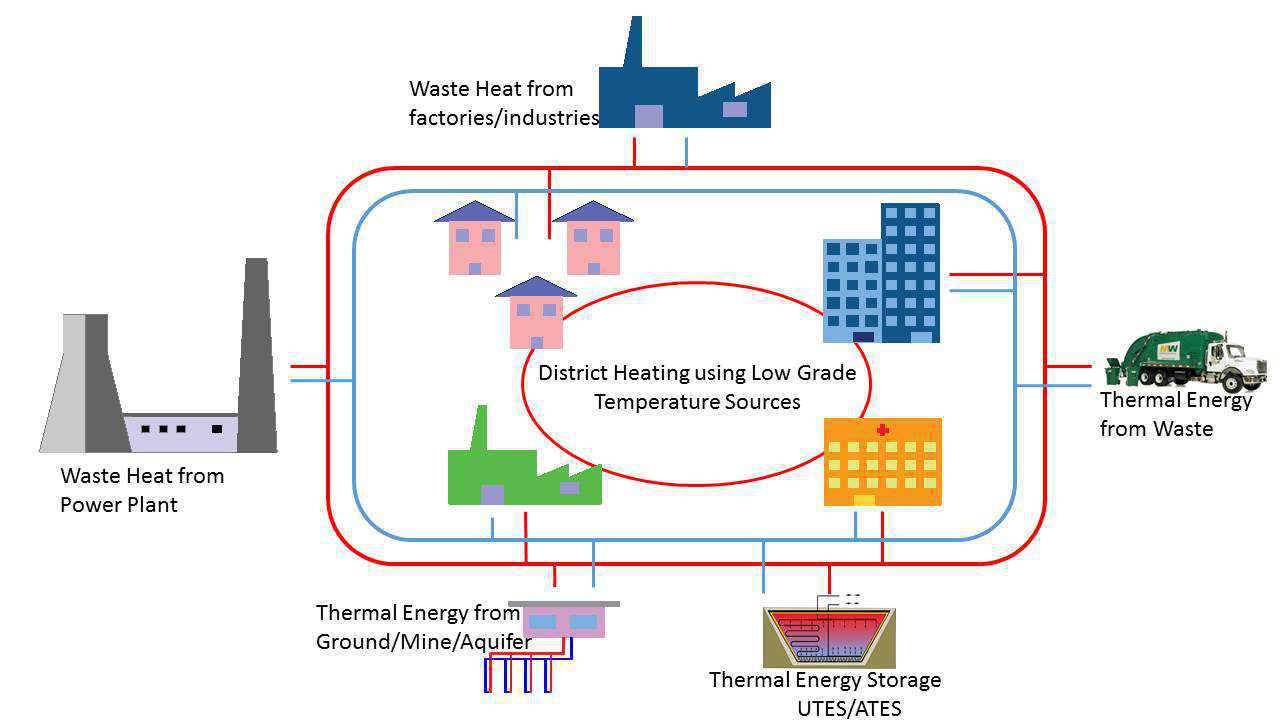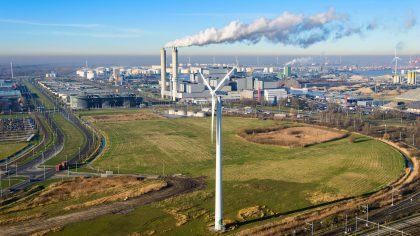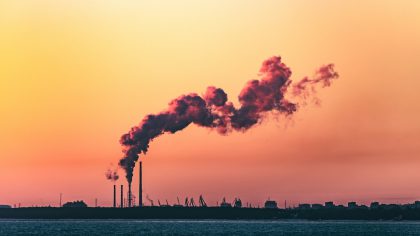Waste heat can also come from cooling processes in commercial buildings such as data centers and supermarkets (CE, 2018). Heat is supplied at lower temperatures than in regular high temperature heat networks. The main benefit of using lower temperatures is that distribution losses are reduced since the temperature difference with the surroundings is lower (CE, 2018).
In this factsheet, LT-heat means heat supplied to end-consumers that has a temperature level below 55ᵒC, which means it is below the supply temperature of regular high temperature heat networks (70-90ᵒC). A temperature classification for heat networks could be as follows: indicate heat supplied to end-consumers between 55ᵒC and 70ᵒC as medium temperature heat, 40-55ᵒC as low temperature heat, and below 40ᵒ as very low temperature heat (Ecofys and Greenvis, 2016). In a LT network the heat supplied to the end consumer has a temperature of below 55ᵒC and the return temperature is about 20-30ᵒC (Ecofys and Greenvis, 2016). There are also very low temperature networks that deliver heat below 40ᵒC to end consumers. Whether LT or even very low T heat is suitable for space heating depends on the heating system and insulation level of the considered building. For hot tapwater a (booster) heat pump or similar installation (including hot water storage/buffer) is need ed in order to upgrade the temperature to above 55-60ᵒC (CE, 2018). Water temperatures below 55-60ᵒC are not suitable for hot tap water due to the current legislation around Legionella prevention (Ecofys and Greenvis, 2016). The temperature lift can also be achieved by using a collective (centralized) heat pump. LT-heating systems are required in dwellings, which requires sufficient insulation, at least corresponding to a dwelling with energy label B (Ecofys and Greenvis, 2016). A LT-heating system consists of low temperature radiators (wall heating) and/or under floor heating. Costs for these measures are included in this factsheet (see ‘Other’). Due to higher insulation standards for new buildings and refurbishment of existing buildings more and more buildings will be suitable for low temperature heating in future years.
A distinction can be made between large and small scale heat distribution networks, the first supplying more than 150 TJ of heat per year (ECN, 2017). Currently, low temperature networks in the Netherlands are small scale. A typical small scale heat network consists of heat source(s), back up heat source(s) and a distribution network including connections to the dwellings. Inside a dwelling a heat delivery kit (with heat exchanger) is installed in order to transfer hot water to the central heating system inside the dwelling. Depending on sort of network (size, type of heat source) one or more substations could be a component of a small scale network as well. This factsheet includes all network components from source to end user including heat delivery kits. The energy in- and output section does only include heat losses in the distributin network itself. It does not include heat losses of the heat source and in the heating system inside the building.
Other possible designs for low temperature networks are: 1) heat cascading , 2) dwellings connected to the return flow of the primary heat transport pipeline of a HT network and 3) forming a separate cluster of dwellings supplied with a low temperature heat source inside a HT heat network. (Ecofys and Greenvis, 2016).
All information in the datasheets is also available in ESDL (Energy System Description Language). You can find them in the Energy Data Repository (EDR).



